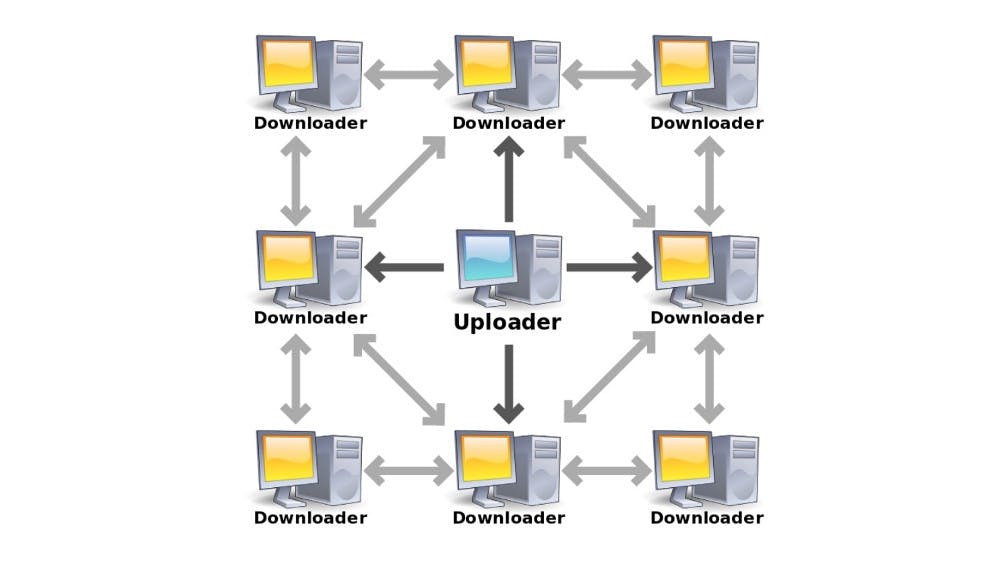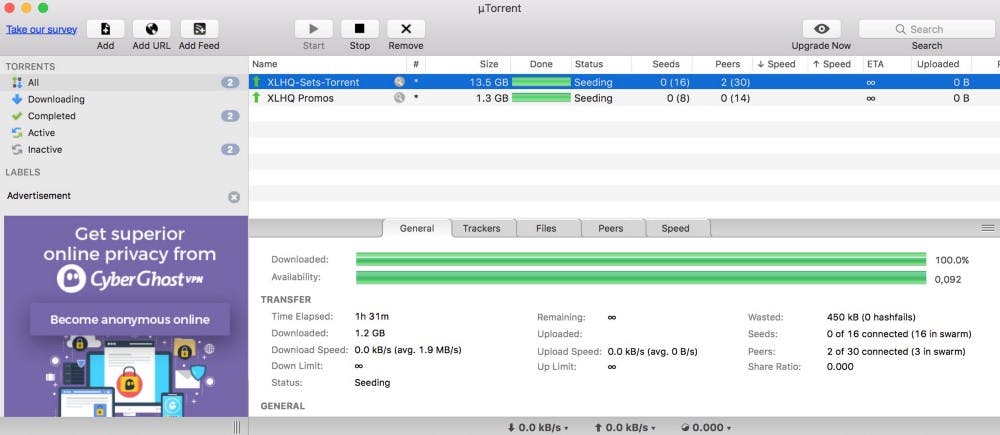Torrenting is a popular file-sharing protocol based on peer-to-peer (P2P) technology. It allows vast numbers of users to connect and share content without having to rely on a single source for downloads. Torrents are so popular it’s estimated 3.35% of all internet traffic is handled by BitTorrent, bringing the total number of monthly users to over 250 million!
On the surface torrenting is simple and easy to use. There are a lot of moving parts to the torrenting experience, however. You don’t need to know the ins and outs of file sharing to make it work, but it’s nice to know what makes torrenting work so you can get the most out of your downloads.
Torrenting Basics
Before you jump into the world of torrenting, there are a few terms you should familiarize yourself with:
Indexers – Websites that collect torrent files and act as a search engine for content. If you’ve ever used The Pirate Bay, Extratorrent, or RarBG, you’ve used an indexer.
Trackers – Servers that work as a bridge between torrent users. Whenever you upload or download a file, a torrent tracker orchestrates the entire thing.
Torrent client – Software used to connect to torrent trackers to download and assemble files on your computer. Deluge, uTorrent, and Transmission are a few popular clients.
Seeders – People who are actively uploading a file to the torrent network. It’s important to keep completed downloads in your torrent client so you can seed to other users. Without seeders, torrent content can’t be downloaded.
Leechers – Downloading a file without uploading (seeding) it. Leeching is generally considered a bad practice while torrenting.
Ratio – The relationship between your uploading (seeding) and downloading (leeching) score. Your ratio for each file should be greater than 1.0, meaning you upload at least as much as you download.
Magnet link – Instead of downloading a torrent file, magnet links identify files and sources and allow your torrent client to start downloading immediately.
History of Torrenting
File sharing dates back to the 1970s when early computer developers needed a way to transfer content from device to device. The first sharing protocols set up simple host-client relationships that let users download copies of files from a centralized server. This quickly gained popularity as technologies such as Usenet and IRC spread to the general population, but it was limited by the server’s speed and available bandwidth.
As content grew in size, new methods were developed to ease the load on servers while increasing the speed of downloads across the board. Peer-to-peer file sharing (P2P) gained enormous popularity in 1999 with the rise and subsequent fall of Napster. The software used P2P networks to link connected users. Instead of downloading one file from one server, you downloaded countless pieces of files from other users, letting people host and share content in swarms. Image for post

When you download something off the Internet, you usually click a download button and the files come onto your computer like manna from heaven. Torrenting works differently from that: rather than taking a file from a single server and downloading it one whole go, a torrent (also called a “tracker”) will break up the big file and chop it up into little pieces, called “packets.”
These packets are on a server in their entirety (called the “seeder”), but are also shared throughout a network of computers also downloading the same file you are. These “peers” (or “leechers” in torrent speak) all have slightly different parts of the same file. The torrent file you downloaded keeps track of who has which packet and alternates where you’re downloading from.
Each leecher acts as a tiny mini-server. This reduces overall network load significantly and makes it very interesting for people that are running on limited bandwidth; the downside is that while you’re downloading, you’re also uploading, increasing the strain on your Internet connection.
As a result, the download process averages out as slower than with a direct download; generally, it is a lot slower in the beginning and then starts to speed up as you go along. This has to do with the fact that your download speed and upload speed are linked up to a certain degree: the more you can contribute to the torrent, the more you can soak up in return.
Another factor that slows down torrents is that the download connection is generally a lot less stable, so expect to see more interruptions than you’re used to with direct downloads. If you’re on a very fast connection the difference is negligible, but people with slower connections may find themselves getting frustrated at the constant slowdowns.
How to use Torrents
The technology may sound complicated, but in practice, it’s surprisingly easy to use torrents. It won’t be as straightforward as clicking to download a file, and it can be challenging to find good-quality content, especially if you’re looking for movies or TV shows. But with a little patience and the right resources, torrenting will open up a new world of downloads for you to browse and enjoy.
- Download a torrent client such as Deluge (Windows, Mac, Linux), BitTorrent, uTorrent, etc. There are some torrent clients for iOS and Android, but it’s best to stick with PC whenever possible.
- Search for a torrent to download. Use an indexer or tracker to find your favourite content. Check out the best private torrenting sites and alternatives to Extratorrent for some suggestions.
- Download the torrent file or click the provided magnet link.
- If your torrent client doesn’t automatically start, open it and add the torrent manually.
- Wait for the torrent to initiate and start downloading from peers.
- When the download reaches 100% you can open the file and enjoy your content.
- Leave the torrent client running with your download actively uploading so you can seed to other users.

Torrenting Depends on Users, Not Servers
When you get a file from a website or hosting service, chances are you’re downloading the content from a single computer. This host-client relationship is pretty straightforward, but the downsides include things like limited bandwidth, slow speeds, and even censorship. After all, if a file only exists in one place, all the host has to do is remove it and no one can use it!
Torrenting neatly sidesteps the problems of availability and slow speeds. You don’t download files from one source, you download it from dozens. Each user who downloads is then turned into an uploader (seeder), which in turn provides more sources for other users to download from. The more people who use BitTorrent, the stronger it becomes. It’s just one of the many reasons torrenting has gotten so popular in recent years.
When torrenting, always keep in mind that you’re part of a community. Seed as much as you can, keep a good ratio, and help your fellow torrenters participate in file-sharing!
Risks of Torrenting
There are very few risks associated with the actual process of torrenting: since you’re downloading it from a network of peers, the chances of a computer virus hitching a ride are smaller than they are with regular downloads. The torrenting community also helps with this, as most people will leave comments below a torrent telling you whether it’s good or bad.
Still, it pays to look out for trolls putting up virus-laden files and remember that when something seems too good to be true, it usually is. It’s best to stay away from uploaders you don’t know and also from torrents that have no comments under them or you may find your computer has fallen victim to cybercriminals or a particularly nasty prank.
Final Thoughts
And that’s really all there is to it. Remember while file sharing is legal, copyright infringement is not. Always try using a VPN.
What do you think about torrenting? Have any questions after reading this article? Let me know in the comments below, thank you for reading!

